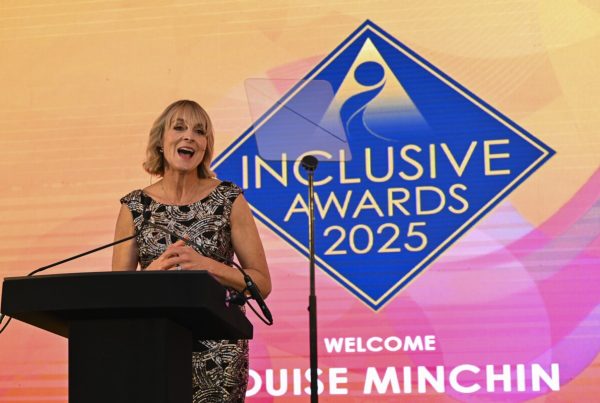- New LinkedIn research reveals 61% of UK professionals surveyed plan to look for a job in 2025, but both job seekers (54%) and HR professionals (79%) say the process has become harder
- 41% of job seekers are applying to more jobs than ever but hearing back less, and 42% of HR professionals say that less than half of job applications received meet all the criteria listed
- New hiring tools are top of HR team’s wish lists for 2025 – as LinkedIn releases new tools and insights to help businesses and professionals hire and get hired
New data from LinkedIn, the world’s largest professional network, finds that while nearly two thirds (61%) of UK professionals plan to look for a new job this year, (79%) of HR professionals say it’s actually become harder to find qualified talent in the last year.
Job seekers (41%) are applying to more jobs than ever, but are hearing back less. Hirers are also finding the process increasingly challenging. Nearly a quarter (23%) of HR professionals are spending between 3 – 5 hours a day sifting through applications, with 42% saying that less than half of job applications received meet all of the criteria listed.
Changing skills requirements
This mismatch is partly driven by changes in the skills and roles that businesses need – with platform data showing that nearly 55% of roles on the UK Jobs on the Rise list did not exist 25 years ago. The list shows an increased demand for AI and sustainability roles – AI Engineer, Environmental Officer, Energy Manager and AI Researcher are all among the top 10 fastest-growing job roles in the UK.
LinkedIn’s inaugural Work Change Report shows that global hiring for AI talent has surged more than 300% over the last eight years. While these changes are driving innovation and growth, they are also presenting new hiring challenges.
LinkedIn data shows that the skills needed for jobs are expected to change 70% by 2030, accelerated by rapid developments in AI. HR professionals list finding candidates with the right technical (49%) and soft (42%) skills as some of the top challenges they face – and nearly two-thirds (61%) say there’s a mismatch between the skills job seekers have and the skills their organisation needs.
How businesses are navigating these challenges
Access to the latest hiring technologies – including AI-powered tools to make hiring faster – is the #1 thing UK HR professionals (45%) say would make the hiring process easier, with over two thirds (67%) saying AI makes it easier to find qualified candidates. To mitigate against emerging skills gaps, businesses are also looking to build skills from within: around two thirds of HR professionals say their organisation is prioritising upskilling initiatives in 2025 – in areas such as AI (65%), sustainability (64%), and soft skills (68%).
Janine Chamberlin, Head of LinkedIn UK, says: “With work and hiring changing so rapidly – the skills needed for jobs are expected to change 70% by 2030 – businesses must find a way to bridge any gaps within their organisations. This is actually a very exciting opportunity for both job seekers and leaders to think differently about skills and stay competitive. Skills-based hiring will be crucial for companies looking to stay ahead, and LinkedIn’s new job match tool is designed to streamline that process, by closely matching jobseekers with the right roles and skills that employers are looking for”.
James Milligan, Global Head of Technology, Engineering & Contracting, Hays, says: “Whether you’re a business looking to get the upper hand on competitors, or a jobseeker looking for your next role, you will be left behind if you don’t embrace new technologies like AI. Look at the digitisation of work over the past years. If a business failed to digitise and was still using older methods, like filing cabinets and pen and paper, they are highly likely not to exist today. The same will be true of candidates and organisations who do not embrace AI. They will fall behind. The true impact will probably be felt after 2030, but the preparation needs to be made now. Those who embrace it will be winning later on, whilst those who ignore it, will likely be out of business in a few years’ time.”
LinkedIn introduces new tools designed to address hiring challenges
To help businesses and professionals hire and get hired, LinkedIn is rolling out new tools:
- LinkedIn’s new job match feature – To help job seekers focus their job search on the opportunities that are the best match for them, LinkedIn will roll out a new job match feature that shows how their skills and experience line up with open positions. It will help job seekers better focus their search on the opportunities where they’re more likely to hear back.
- AI-assistant within LinkedIn Jobs – To help small business hirers stay competitive in today’s evolving market, LinkedIn will also rollout an AI-assistant within LinkedIn Jobs to help small businesses post a job and hire qualified candidates faster and more efficiently. The AI-assistant is available today in the US to select charter customers. It will be rolled out in English to additional global customers over the coming months.
LinkedIn will also continue the roll out of its first AI agent, Hiring Assistant – launched in October – designed to take on a recruiter’s most repetitive tasks so they can spend more time on their most impactful work. It will help hirers find candidates based on skills, as opposed to traditional proxies like where someone went to school or previous employers. And, LinkedIn continues to show verifications on job posts, so when a job seeker sees a job with a verified badge, that means certain information about the organisation or the job poster has been confirmed.
—
About LinkedIn
LinkedIn connects the world’s professionals to make them more productive and successful and transforms the way companies hire, learn, market, and sell. Our vision is to create economic opportunity for every member of the global workforce through the ongoing development of the world’s first Economic Graph. LinkedIn has more than 1 billion members and has offices around the globe. www.linkedin.com
Methodology
Consumer and Global HR Professionals Research: This research was conducted by Censuswide between November 27 to December 16, 2024, among 22,010 consumer respondents and 8,035 global HR professionals between November 28 to December 18 2024. Markets involved included: UK, USA, France, Germany, India, Spain, Brazil, Ireland, the Netherlands, Singapore, Japan, Sweden, Saudi Arabia, UAE, Australia, Indonesia, and Italy. Censuswide abides by and employs members of the Market Research Society which is based on the ESOMAR principles. Censuswide are members of the British Polling Council.
Jobs on the Rise: LinkedIn Economic Graph researchers examined millions of jobs started by LinkedIn members from January 1, 2022 to July 31, 2024 to calculate a growth rate for each job title. To be ranked, a job title needed to see positive growth across our membership base and sufficient job postings in the past year, as well as have grown to a meaningful size by 2024. Identical job titles across different seniority levels were grouped and ranked together. Internships, volunteer positions, interim roles and student roles were excluded, and jobs where hiring was dominated by a small handful of companies in each country were also excluded. Additional data points for each of the job titles are based on LinkedIn profiles of members holding the title and/or open jobs for that title in the country.




